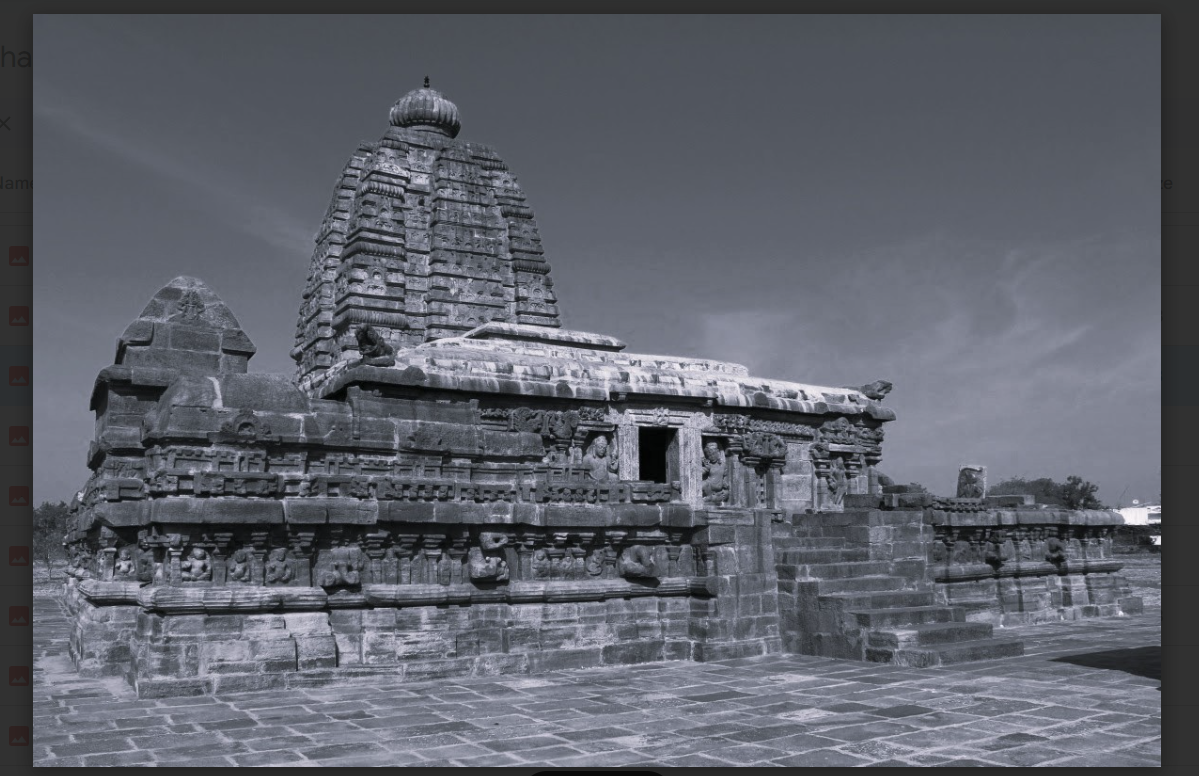
Sangameswara Temple During Karthika Masam
The sacred month of Karthika has arrived, coinciding with the cool breezes of the autumn season. As soon as this holy month begins, the attention of the people of Telangana turns towards the Sangameswara Temple. The Sangameswara Swamy Temple, located at the Triveni Sangamam (confluence) of the Godavari, Maneru, and Venkateswara Vagu rivers, becomes a special attraction during Karthika Masam.
Jogulamba Gadwal district, one of the 33 districts of Telangana, is renowned for its rich spiritual and historical heritage. The Sangameswara Temple, situated near Alampur at the confluence of the Krishna and Tungabhadra rivers, stands as a sacred spiritual center attracting devotees. Recognized as one of the prominent Shiva temples in South India, it holds a special place in Alampur.
Due to its historical, cultural, and spiritual importance, this temple is also referred to as "Dakshina Kashi" (Kashi of the South). This site on the banks of the Godavari is a blend of natural beauty and spiritual splendor. Devotees believe that just as the rivers merge here, devotion, faith, and virtue unite in this place. Early in the morning, before sunrise, devotees take a holy dip in the Godavari, perform japas (chants), vratas (vows), and haratis (lamp offerings). Every evening during Karthika Masam, this shrine transforms into a festival of lights. Thousands of devotees light lamps on the riverbanks, praying to Lord Sangameswara to fulfill their desires. The reflection of the lamp light on the water creates a magnificent sight. The strong belief among devotees is that "lighting a single lamp dispels darkness and illuminates the mind."
Historical Background
The Sangameswara Temple is located approximately 10 miles from Alampur, near the village of Kudavelli, at the confluence of the Krishna and Tungabhadra rivers. Historical evidence suggests that this temple was built during the 6th century under the rule of the Chalukya dynasty. The temple stands as an example of Chalukya architecture and the craftsmanship of the artisans, reflecting the historical and cultural greatness of that era.
The temple is situated at the confluence of the two rivers, representing a form of Lord Shiva. Hence, the temple acquired the name "Sangameswara" Temple. This confluence is considered highly sacred in the Hindu tradition. Devotees believe that performing ancestral rituals ( pitru karyas ) here enhances spiritual merit. Built in the Chalukya style, the Sangameswara Temple has a simple yet attractive architectural style. Devotees believe that the Shivalinga in the garbha griha (sanctum sanctorum) is Swayambhu (self-manifested). The serene surroundings of the temple, combined with the natural beauty of the river confluence, enhance its appeal. The temple is also associated with the Nava Brahma Temples in Alampur, a group of Shiva temples built during the Chalukya period. The Sangameswara Temple is considered part of this group, further increasing the cultural heritage of the region.
Special Features of the Temple
The Sangameswara Temple is distinguished by its sacred location and historical significance. Some of its key features include:
• River Confluence: Located at the confluence of the Krishna and Tungabhadra rivers, the temple is considered an exceptionally holy site. Devotees believe that performing ancestral rituals and Tarpana here leads to Moksha (liberation).
• Chalukya Architecture: The temple's structure reflects the Chalukya style. The Shivalinga in the sanctum and the intricate sculptures on the temple walls vividly display the artistic grandeur of that period.
• Ancestral Rituals: The confluence is a prominent center for performing ancestral rites like Tarpana and Shraddha . This contributes to the region being called "Dakshina Kashi."
• Submersion in Water: For a part of the year, especially during the monsoon season when the Krishna river water levels rise, the temple gets submerged. This phenomenon, known as Jaladhivasam (dwelling in water), is a unique attraction, as devotees flock to visit when the temple emerges from the water.
Festivals and Rituals
The Sangameswara Temple hosts special rituals during Maha Shivaratri and Karthika Masam. Devotees perform Abhishekam (anointing) to the Shivalinga, Homas (fire rituals), and other celebrations. Additionally, special pujas are performed during the month of Shravana. A large number of devotees from across the district participate in these events. Karthika Mondays, Pradosha Vratas, and Purnima (full moon) days are considered most special at this temple. Devotees fill the temple premises with chants of Rudrabhishekas, Lingaarchanas, and Harinama Sankeertanas. The temple transforms into a spiritual hub with the conduct of Annadanam (food donation), Veda Parayanam (Vedic chanting), and Satsangs (spiritual gatherings).
Karthika Purnima Festival: The climax of the Karthika Masam is the Karthika Purnima Deepotsavam (Festival of Lights). Thousands of devotees light lamps on the Godavari riverbank, filling the sky with the slogans of "Hara Hara Mahadeva." At that moment, the place truly feels like Bhuloka Kailasam (Kailasa on Earth). Devotees believe that visiting Lord Sangameswara during this month dispels life's sorrows and brings prosperity. The couplet, "Snanam in the Sangamam, Darshanam of Sangameswara," becomes the mantra for every devotee during this month.
Travel Facilities
To reach the Sangameswara Temple, visitors can travel by bus from Atmakur in Kurnool district to Kapileswaram, and then take an auto for about 5 kilometers to reach the temple. Located 200 kilometers from Hyderabad, the temple is easily accessible by road. The nearest railway stations and bus stands in Alampur provide convenient transportation.
The Sangameswara Temple is not only a spiritual center but also a symbol of the cultural heritage of Jogulamba Gadwal district. Alampur’s reputation as "Dakshina Kashi" stems from the presence of the Jogulamba Shakti Peetha, the Nava Brahma Temples, and other historical temples. Since the time of the Chalukyas, this region has been an important spiritual center, and the Sangameswara Temple is a key part of this legacy.
Tourist Attraction
The Sangameswara Temple attracts not only spiritual devotees but also tourists interested in history and natural beauty. The scenic views near the river confluence, the elegance of the Chalukya architecture, and the peaceful atmosphere of the temple draw visitors. Visiting this temple along with the other temples in Alampur provides a comprehensive spiritual and historical experience. The natural landscapes offer a great experience for photography enthusiasts.
